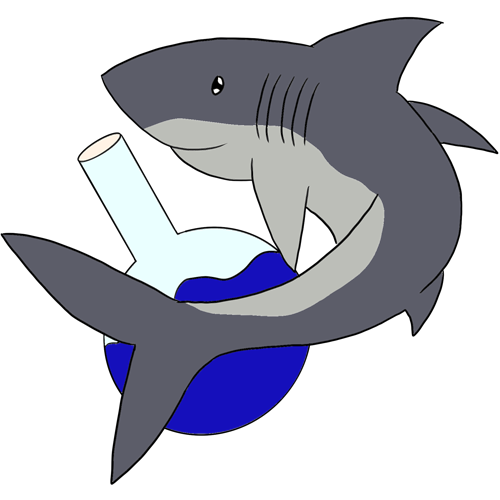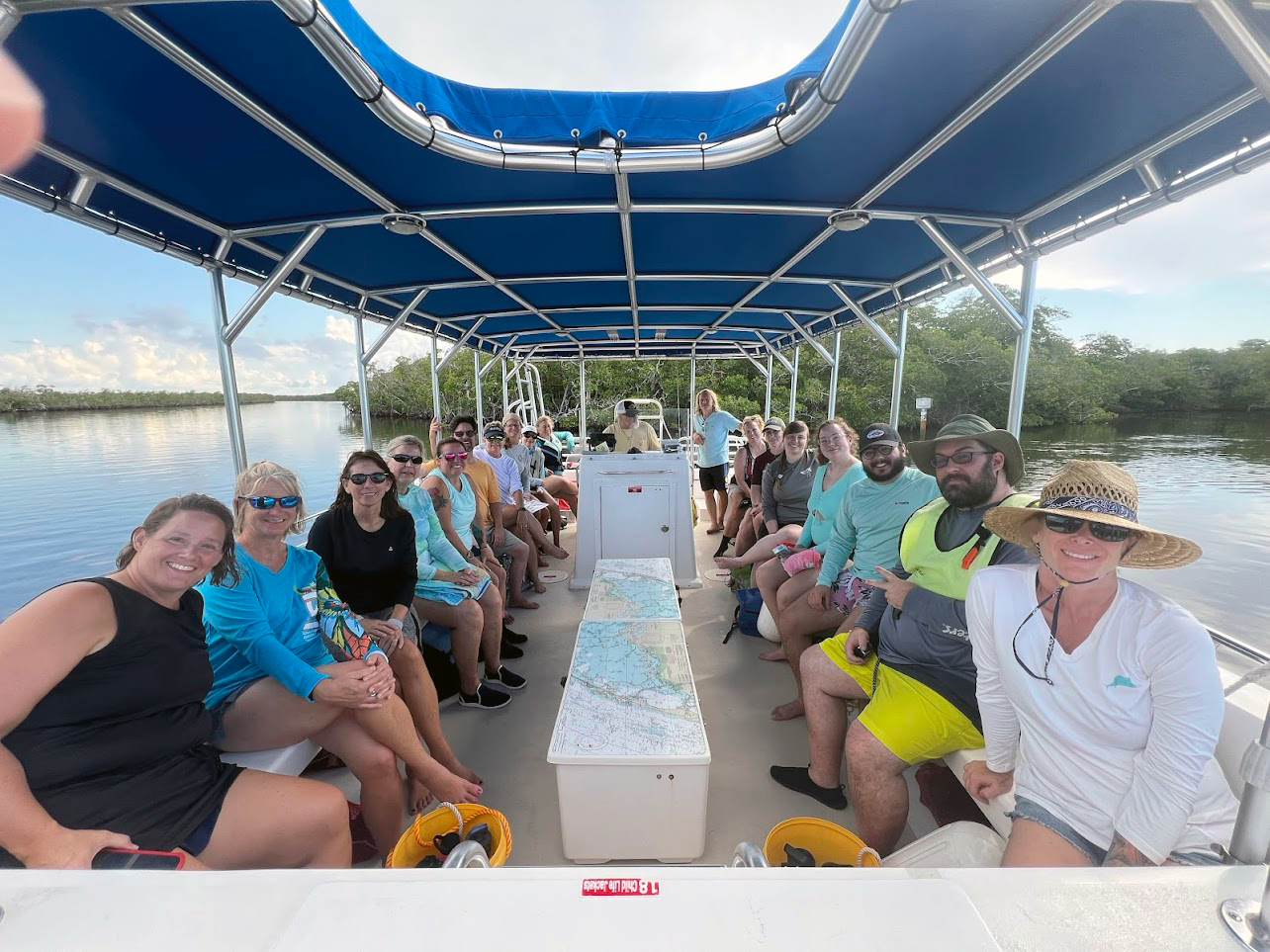As a teacher, I get the opportunity to participate in many different professional learning opportunities, most of them are focused on programs to use in the classroom, the 5E’s, or occasionally an organization that offers resources for teachers to use like the Everglades Foundation. This year, through a grant funded by the Guy Harvey Foundation, my county was able to take a science teacher from each high school as well as teachers in different subject areas and grade levels in the Guy Harvey Track schools and bring them to Marine Lab in Key Largo for 3 days where we participated in labs, discussions, as well as went on snorkeling trips where we conducted citizen science surveys of coral and fish on reefs and in estuaries!

MarineLab is a marine science classroom where students from all over visit to learn more about our oceans from the estuaries to the reefs and beyond. (learn more about Marine Lab here: https://www.marinelab.org/about) Groups from all over the country come to MarineLab to immerse their students in experiences that they would not normally get to have. For example, one of the groups that arrived on our second day was a class group from Wisconsin! This was the first time many of them got to see and experience the ocean! Speaking to some of the instructors at the lab, the diversity of the groups that comes to the MarineLab is truly astounding, and they are always so thrilled to experience the ocean and leave with a new drive to protect it.

On our arrival day, we began our experience by learning about estuaries and all the different wildlife that thrive there, prepping for our trip out to the estuary the next morning. The instructor then took us out to the lagoon on property where we got to snorkel around and see some of the amazing animals that hang out right in their backyard!

From many different parrotfish species to fire sponges and tunicates, to barracuda and crabs we got to see close up some amazing juvenile animals living in the protected dwelling behind the lab. One of the other amazing sights here at the lagoon was the Underwater Hotel that sits in the Lagoon! We got to dive down and look through the windows to see the rooms lit up inside with tables and lamps decorating the inside! (https://jul.com)
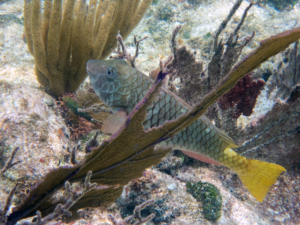
We then ended our first day with a plankton lab that got us excited and invested in the little critters that make up the microscopic world around us. This first day was a fantastic start to getting inspired by not only the material they taught at the Marine Lab, but the WAY they taught it. As a teacher that loves to be constantly bringing in or creating immersive lessons, this plankton lab was incredible. I had experienced looking at plankton before, but it was truly baffling to realize I could have been collecting and using plankton samples in my classroom this whole time!
Our second day was filled with amazing snorkeling trips starting with the beautiful Florida Bay estuary! Estuaries are, of course, my favorite marine habitat so starting our snorkeling adventures there had me so excited! The mangroves were such a beautiful backdrop to seeing rays, sharks, barracuda, and so many little sergeant majors! The seagrasses held so much life I could have spent the whole day just exploring the area. One of the coolest things we got to see was a juvenile tagged nurse shark that rested underneath a sunken boat. While it was hard to get a good view of it, hanging back and diving down got us some good glimpses of the cutie! Back on the boat I discovered my new favorite little sea slug, the lettuce sea slug! I think I died of cuteness for this little guy who refused to let go of my finger!
After lunch we went out to the coral reef! For our first reef, we went to a shallower location during a low tide and got to see so many amazing fish, from parrotfish and larger barracuda to hogfish! At our second reef I got to see a squad of reef squid, which was my first-time seeing squid in their natural habitat and was SO cool to watch! On this first set of trips we focused on looking at the corals that were still alive and assessed their health and if we saw any disease. Unfortunately, after going out to the reef last year, I could see a major difference in the reel health and even in the population of fish on the reef. The constant record heat waves in our oceans are causing many of the reefs to stress and start to die. While it was amazing to see all the different animals, it was incredibly upsetting to see the coral in such a state we can only hope and support organization that are working to help our corals in this trying time.

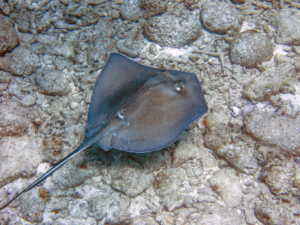
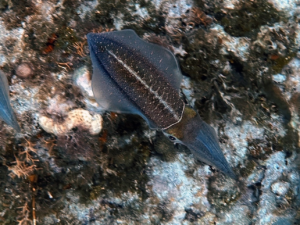

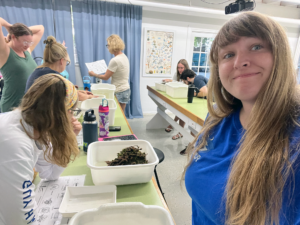
We ended our day with a (dare I say FINTASTIC) lesson on fish anatomy and placement for our last snorkeling trip the next day and another fun lab on the small critters that reside on live rock out in the bay. This lab was lovingly called “Rock Shake” where we literally shook a rock and collected and viewed the unique and exciting organisms that came out of it. This was another activity that I was so excited to take back to the classroom and have my students do! What more fun is there than shaking rocks and seeing small crabs and worms come out of it!!

On our last day, we went to one last reef that was an interesting mix of wreck pieces and reef. We focused on the fish on this trip, counting so many different tangs, sergeant majors, barracuda, and parrotfish. Our last day was also coincidentally World Ocean’s Day! What made this trip even more magical was seeing a beautiful little green sea turtle swim her way through our group, a reef shark circle us and then swim off, and a southern ray swim underneath us. Check, Check, Check. My day = Made.
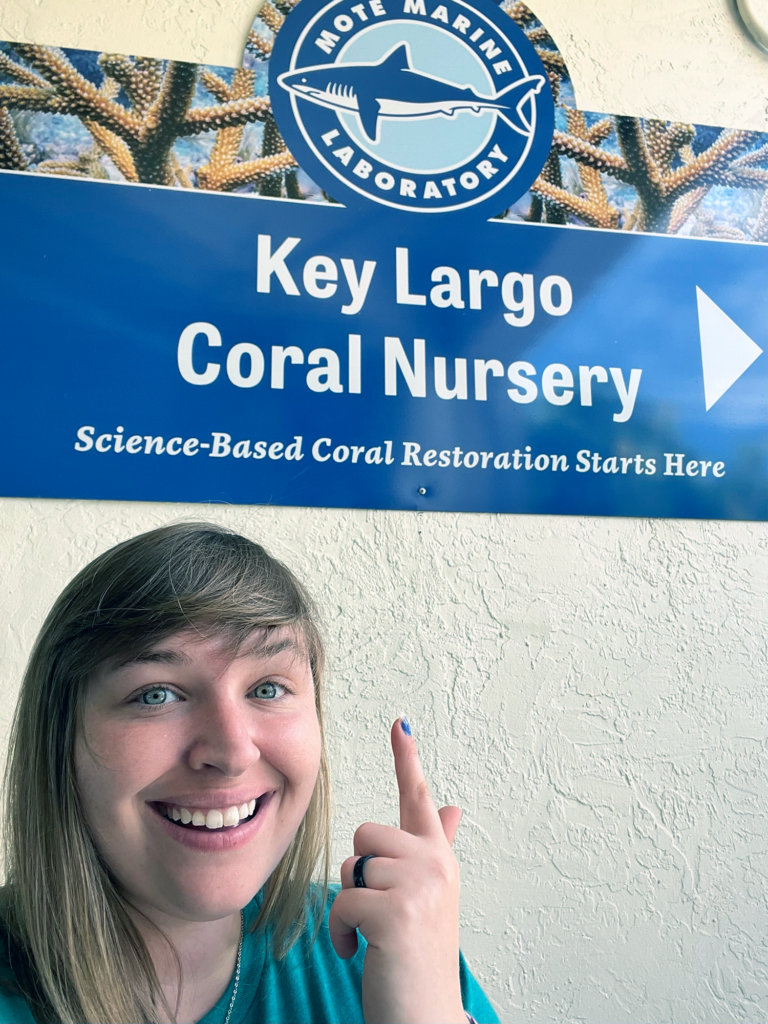
After getting back from our snorkeling trip, we made our way over to Mote’s Coral Restoration Lab in Key Largo (https://mote.org/location/key-largo-coral-nursery/) where we got to see some of the incredible work they are doing with branching, but especially boulder coral. Mote has recently begun to work with micro fragmentation of boulder corals due to an observation that breaking the corals elicits a stress response where the coral will actually grow more rapidly. We got to help with the process of micro fragmentation and create our own little sample that would grow and eventually be planted out on a reef.
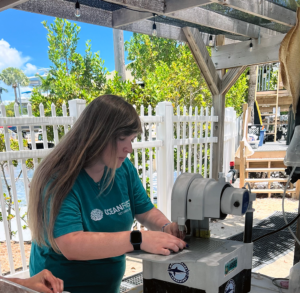
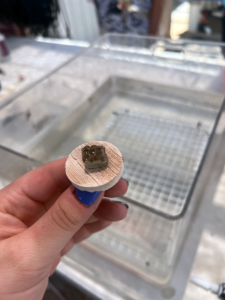
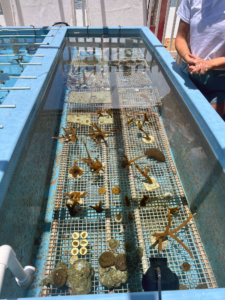
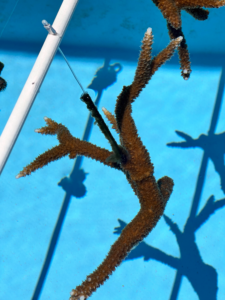
Overall, I am so happy to have been invited onto this unique and amazing professional development. I am so lucky to be recognized for the work I put in at my school for Marine Science and am thrilled to continue to do what I love, with even more gusto! Unfortunately, this did ruin every other PD for me, so good luck topping a trip to the Keys!
